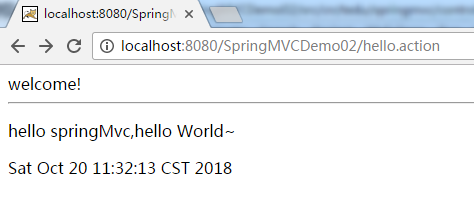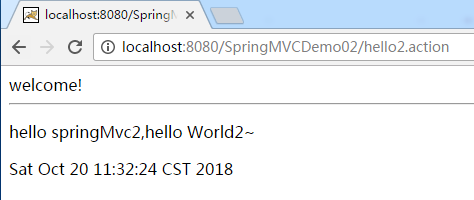SpringMVC支持使用注解方式配置,比配置文件方式更加灵活易用,是SpringMVC使用的主流模式。
1.在配置文件中开启SpringMVC的注解
<!-- 开启包扫描 --> <context:component-scan base-package="cn.tedu.springmvc.controller"></context:component-scan> <!-- 开启SpringMVC的注解形式 --> <mvc:annotation-driven/>

<?xml version="1.0" encoding="UTF-8"?> <beans xmlns="http://www.springframework.org/schema/beans" xmlns:xsi="http://www.w3.org/2001/XMLSchema-instance" xmlns:mvc="http://www.springframework.org/schema/mvc" xmlns:context="http://www.springframework.org/schema/context" xsi:schemaLocation=" http://www.springframework.org/schema/mvc http://www.springframework.org/schema/mvc/spring-mvc-3.2.xsd http://www.springframework.org/schema/beans http://www.springframework.org/schema/beans/spring-beans-3.2.xsd http://www.springframework.org/schema/context http://www.springframework.org/schema/context/spring-context-3.2.xsd"> <!-- 开启包扫描 --> <context:component-scan base-package="cn.tedu.springmvc.controller"></context:component-scan> <!-- 开启SpringMVC的注解形式 --> <mvc:annotation-driven/> <!-- 配置处理器映射器的路径和控制器的映射关系 --> <!-- <bean name="/hello.action" class="cn.tedu.springmvc.controller.Hello"></bean> --> <!-- 配置视图解析器中 视图名称 和 真正视图页面的映射关系 --> <bean class="org.springframework.web.servlet.view.InternalResourceViewResolver"> <property name="prefix" value="/WEB-INF/"></property> <property name="suffix" value=".jsp"></property> </bean> </beans>
2.使用注解开发Controller
package cn.tedu.springmvc.controller; import javax.servlet.http.HttpServletRequest; import org.springframework.stereotype.Controller; import org.springframework.ui.Model; import org.springframework.ui.ModelMap; import org.springframework.web.bind.annotation.RequestMapping; // 使当前类被Spring管理 @Controller public class Hello { // 将当前方法注册为一个Controller, // 当访问指定路径时,当前类的方法执行处理 @RequestMapping("/hello.action") public String hello(HttpServletRequest request,ModelMap model){ System.out.println(request.getAttribute("name")); model.addAttribute("msg", "hello springMvc,hello World~"); return "hello"; } // 一个Controller可以配置多个Controller方法, // 指定不用的路径,访问不同路径执行不同方法 @RequestMapping("/hello2.action") public String hello2(Model model){ model.addAttribute("msg", "hello springMvc2,hello World2~"); return "hello"; } }
3.发布应用,通过浏览器进行访问


4.SpringMVC注解方式工作原理
(1)当服务器启动时,会加载web.xml,之后通过引入核心配置文件加载springmvc-servlet.xml就会 解析该xml配置文件。
(2)当解析到包扫描时,根据指定的包将含有@Controller注解的类,=围棋创建对象。
(3)当解析到<mvc:annotation-driven/>开始匹配MVC注解。
(4)之后解析@RequestMapping("/hello.action")之后会将value值进行保存,将方法进行绑定。
(5)当用户发出请求时,处理器映射器就是匹配用户的url和保存号的value值,如果匹配成功,则会执行方法;如果匹配不成功,则报404。
